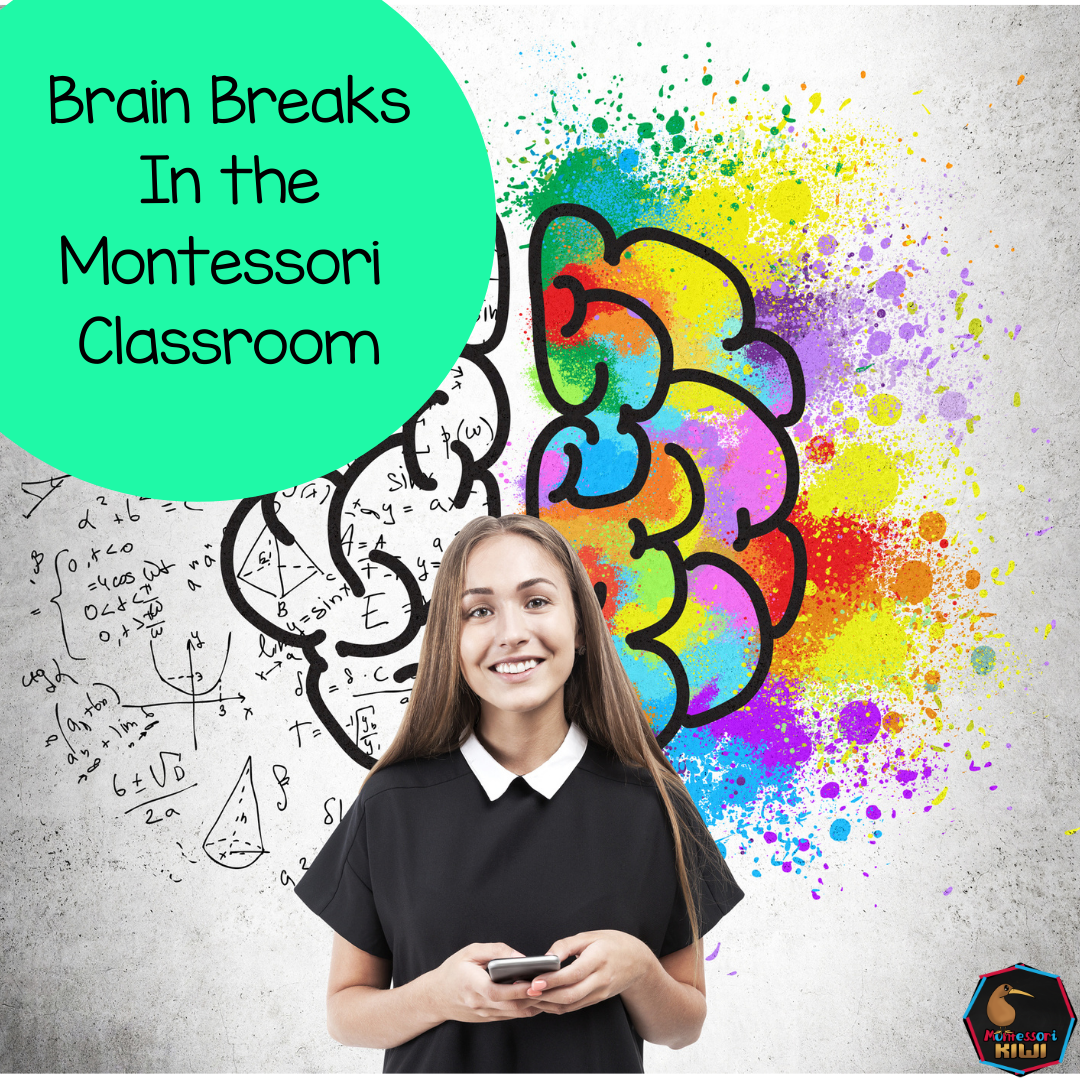
Brain Breaks For The Montessori Classroom
Share
Brain breaks are a way of giving the brain a moment of rest or reprieve from focused work. In this article from Edutopia the author cites numerous research about the benefits of breaks for children based on real life examples.
While Montessori includes lots of physical or seemingly relaxing activities such as walking to the shelf or watering a plant children do need opportunities to relax and move as part of their day.
In particular children with behavioural and learning needs such as dyslexia, executive functioning issues, SPD, Dyslexia, Autism, or ODD need regular breaks to succeed in their day.
Edutopia states that:
"...breaks are an essential part of learning. But the benefits extend beyond the psychological well-being of students. Particularly for younger students, regular breaks throughout the school day can be an effective way to reduce disruptive behavior. In a series of recent studies, short physical activity breaks in the classroom improved students’ behavior, increasing the effort they put into their activities as well as their ability to stay on task."
Brain breaks can include physical activities or quiet activities and it is important to have a menu that children can choose.
To make a brain break effective for a child, It needs to be an actual break. For example, suggesting a child with fine motor co-ordination challenges takes a break by colouring in a Mandala neatly, after having to handwrite their spelling words is not a break!
Brain breaks can be scheduled in terms of time e.g. After 10 minutes focused work the child does a brain break activity or after a child has completed a maths task they can have a brain break other children might need one when they have a sensory need or are feeling frustrated or distracted. Like all things in the classroom the child will need guidance on when to take brain breaks and may need you to schedule it into their work plan as a preventative method.
Different children have different needs so having a variety of activities is important so children get what they need to be successful. What could be a relaxing activity for one child might not be for another!
As always discussing that people have different brains, different needs and being respectful with how you refer to brain breaks is important in creating an inclusive classroom. Brain breaks should be taught to all children so that children don't see that they are "other" or just for "those" children.
These are some brain break ideas that may work for your child or in a Montessori class. I've compiled a list of activities that children can do by themselves or with a small group. Many of the ideas online I have found are for large groups where all children take a brain break at the same time.
Movement ideas
- Mini Trampoline
- Large loose parts play e.g. pieces of wood and tyres that the child can push and build with
- A selection of fitness cards with pictures of exercises to do
- Fidget cubes
- A walk or run around the school grounds
- Taking something to another class or room
- Doing a classroom job
- Stretchy band exercises
- Playdough
- Go Noodle has a range of free dance and movement videos that are great for ages 5-12.
- Lifting weights
Relaxing ideas
- Jigsaw Puzzles/Tangrams
- Building blocks that can be used open ended play
- STEM activity bins. These are ideas on small pieces of paper along with bins of ready to use material that the children pull out and do when they want. I've used these ones before with great success.
- Reading or flicking through a book
- Playing a card game such as "snap"
- Handcraft or sewing activities
- Guided Meditation (there are some available online that children could listen to)
- Listening to music
- Reading or listening to books. "GetEpic.com" has books that "Read" to children and audiobooks
- Colouring or doodling. Some children like to have a premade page to colour in, others enjoy the opportunity to do free art by themselves
- Pilates or Yoga
- A premade Sensory bottle can be tipped and watched by a child
- Talking to friends. Before you laugh at this one know that there are some children who have anxiety or hyperfocus (ADHD, Autism) who benefit greatly from having an opportunity to talk or share about a topic that is important to them and find it relaxing
- Baking or cooking
- Blowing bubbles with bubble mixture
Other ideas:
- Food or drink (thanks heartful mom for this idea!)
You may be interested in my blog series on ADHD and Montessori here